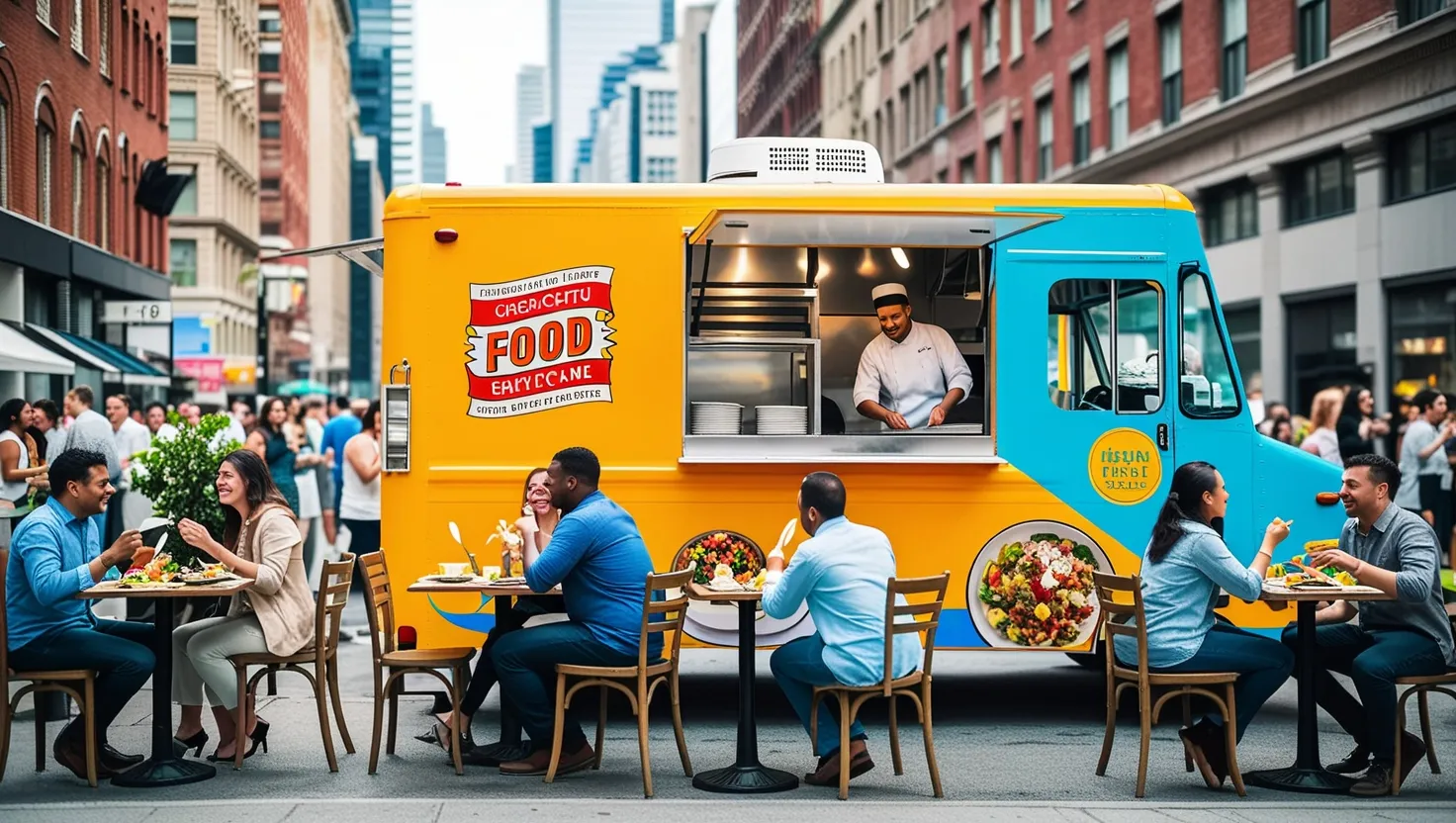As I stand in the bustling streets, the aroma of sizzling food and the hum of engines fill the air, and my mind wanders to Liam, a young chef who dared to turn his passion into a mobile culinary adventure. Liam’s journey with his food truck is a tale of dreams, challenges, and the intricate dance of managing costs, pricing, and customer relationships.
Liam’s story begins with a dream that many chefs share: to own a successful restaurant. However, the traditional route of opening a brick-and-mortar establishment seemed daunting, especially given the hefty startup costs. So, he opted for a more agile and cost-effective approach – a food truck. With his savings in hand, Liam embarked on a journey that would teach him the nuances of running a business on wheels.
The first hurdle Liam faced was the initial investment. Buying a new food truck can cost anywhere from $50,000 to $175,000, a significant outlay for any entrepreneur. However, Liam was determined and opted for a used truck, which was more within his budget. He found a reliable used truck for around $40,000, a price that included the necessary equipment and decor to get him started.
Once the truck was secured, Liam delved into the world of licenses and permits. These are often overlooked but are crucial for any food business. The costs can vary widely depending on the location, but Liam was prepared to spend anywhere from $1,864 to $28,276 to ensure he was compliant with all local regulations. This initial investment was just the beginning of his financial planning.
As Liam started operating his food truck, he quickly realized that managing costs was an ongoing battle. Fuel and maintenance were constant expenses, ranging from $500 to $1,000 per month. Insurance was another significant cost, varying by policy but essential for protecting his business. Liam also had to budget for startup inventory and serveware, which added another few thousand dollars to his initial outlay.
Despite these costs, Liam’s focus was on creating a menu that would attract and retain customers. He understood that pricing was a delicate balance between profitability and customer affordability. Too high, and he would scare off potential customers; too low, and he would struggle to make a profit. Liam spent countless hours perfecting his menu, ensuring that each dish was not only delicious but also priced correctly.
The concept of profit margins became Liam’s new obsession. He learned that the net profit margin – the percentage of profit after all costs are factored in – was the true measure of his business’s health. For instance, if Liam’s food truck generated $20,000 in sales one month but spent $18,000 on expenses, his net profit margin would be 10%. This was a stark reminder that every dollar counted, and efficient cost management was key to his success.
Gross profit margin, on the other hand, gave Liam insight into the efficiency of his operations. By subtracting only the cost of goods sold (food and labor) from his revenue, he could see how well his kitchen was performing. A high gross profit margin indicated that his menu was well-priced and his kitchen was running efficiently.
As Liam’s food truck gained popularity, he realized that cash flow management was just as crucial as profit margins. Forecasting sales and sticking to budgets became his mantra. Liam would track his budgets on a weekly and monthly basis, adjusting his spending based on actual sales. This approach helped him weather unexpected storms, like a sudden drop in sales due to bad weather, without compromising his overall financial goals.
Customer relationships were another critical aspect of Liam’s business. He understood that loyal customers were the backbone of any successful restaurant. Liam made it a point to engage with his customers, gathering feedback and using it to improve his menu and service. He also implemented a loyalty program, rewarding repeat customers with discounts and special offers. This not only kept his customers happy but also encouraged them to spread the word about his food truck.
Through his interactions with customers, Liam learned about the importance of transparency. He started providing detailed nutritional information on his menus, which not only attracted health-conscious customers but also built trust within the community. This transparency extended to his social media presence, where Liam would share behind-the-scenes glimpses of his kitchen and the care he took in preparing each dish.
As the months passed, Liam’s food truck became a staple in the local food scene. His attention to detail, efficient cost management, and strong customer relationships had transformed his dream into a thriving business. The profit margins were healthy, the cash flow was stable, and the customers were loyal.
Liam’s journey was not without its challenges, but it was a testament to the power of hard work and strategic planning. He had turned a modest investment into a successful venture, one that not only fulfilled his passion for cooking but also provided a sustainable income.
One day, as I watched Liam’s food truck drive away from a bustling event, I couldn’t help but feel a sense of admiration for this young chef. He had taken a risk and turned it into a reality, proving that with the right mindset and skills, even the most ambitious dreams can come true. Liam’s story is a reminder that success is not just about the destination but about the journey, the lessons learned, and the relationships built along the way.
As Liam continues to grow his business, he often reflects on the early days of his food truck. It was more than just a vehicle; it was a mobile kitchen, a marketing tool, and a community hub. It taught him the value of adaptability, the importance of customer feedback, and the delicate balance between costs and pricing.
Liam’s dream of owning a successful restaurant is now within reach. He has plans to expand, perhaps opening a brick-and-mortar establishment or even a second food truck. But for now, he is content with the knowledge that his hard work and dedication have paid off. He has created something special – a business that not only brings joy to his customers but also fulfills his own culinary aspirations.
In the end, Liam’s story is a testament to the power of entrepreneurship and the culinary arts. It shows that with passion, determination, and a keen eye for detail, anyone can turn their dreams into a reality, one delicious meal at a time.






